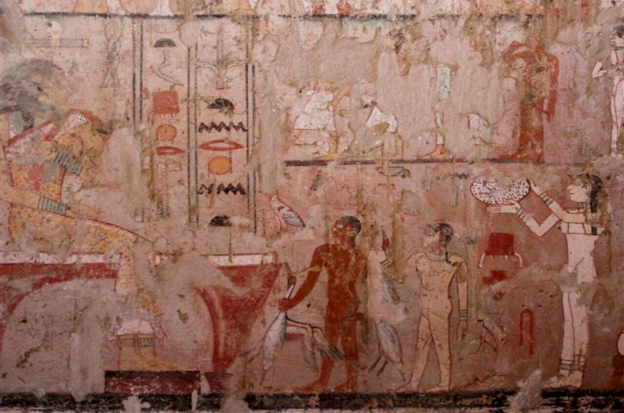4,000 Year Old Tomb Discovered in Egypt
December 19, 2018
Recently, a huge discovery has been made. A tomb, dating back nearly 4,000 years, has been called “one of a kind”. Discovered in Saqqara, Egypt, this tomb was the final resting place of an Egyptian priest named Wahtye. This is an incredible find as it is a very good look at what the tomb may have looked like even 4,000 years ago. (That would be 2,000 B.C.!)
What is so truly spectacular about this tomb is the extent to which it has been preserved. The tomb itself measures about 33 x 10 x 10, and consists of two different levels filled with paintings and statues of this priest, all completely and nearly perfectly preserved. The tomb had never been looted, nor had time taken its toll on the paintings and statues, as these things have happened in many other tombs. Despite being 4,000 years old, even the colors of the drawings and statues have been preserved. I highly encourage you to search up more pictures of the tomb if you are interested as it is very beautiful and fascinating.
The pictures and statues themselves depict Wahtye and his family. According to one excavator, Wahtye must have really loved his mother, as she is depicted all over the tomb. Other drawings depict his priestly life, such as making religious sacrifices and offerings. Other parts show other aspects of his life, such as making pottery and wine, hunting, sailing, and performing music.
This tomb is a truly incredible archeological achievement. Excavators are still exploring this incredible tomb, indicating that there is a shaft which they still have not explored. Searching tombs is not a quick, easy process, as any sudden movements could cause damage to these ancient sites. However, archeologists believe that this shaft will lead to even more paintings and artifacts. Perhaps they will even find the sarcophagus of Wahtye himself in this unexplored layer. This tomb is a truly remarkable and interesting look into the past. Four-thousand years is much more human history. Perhaps Wahtye’s tomb will provide insight to scholars which they had not thought of or found before. Only time will tell what this new discovery will bring.

